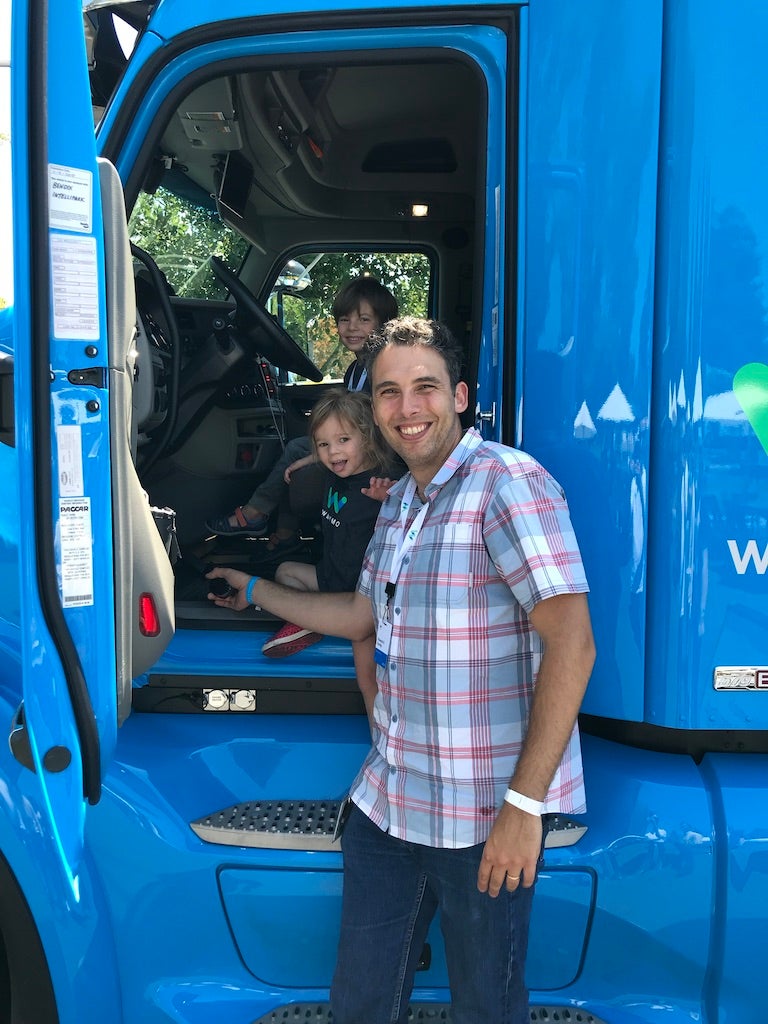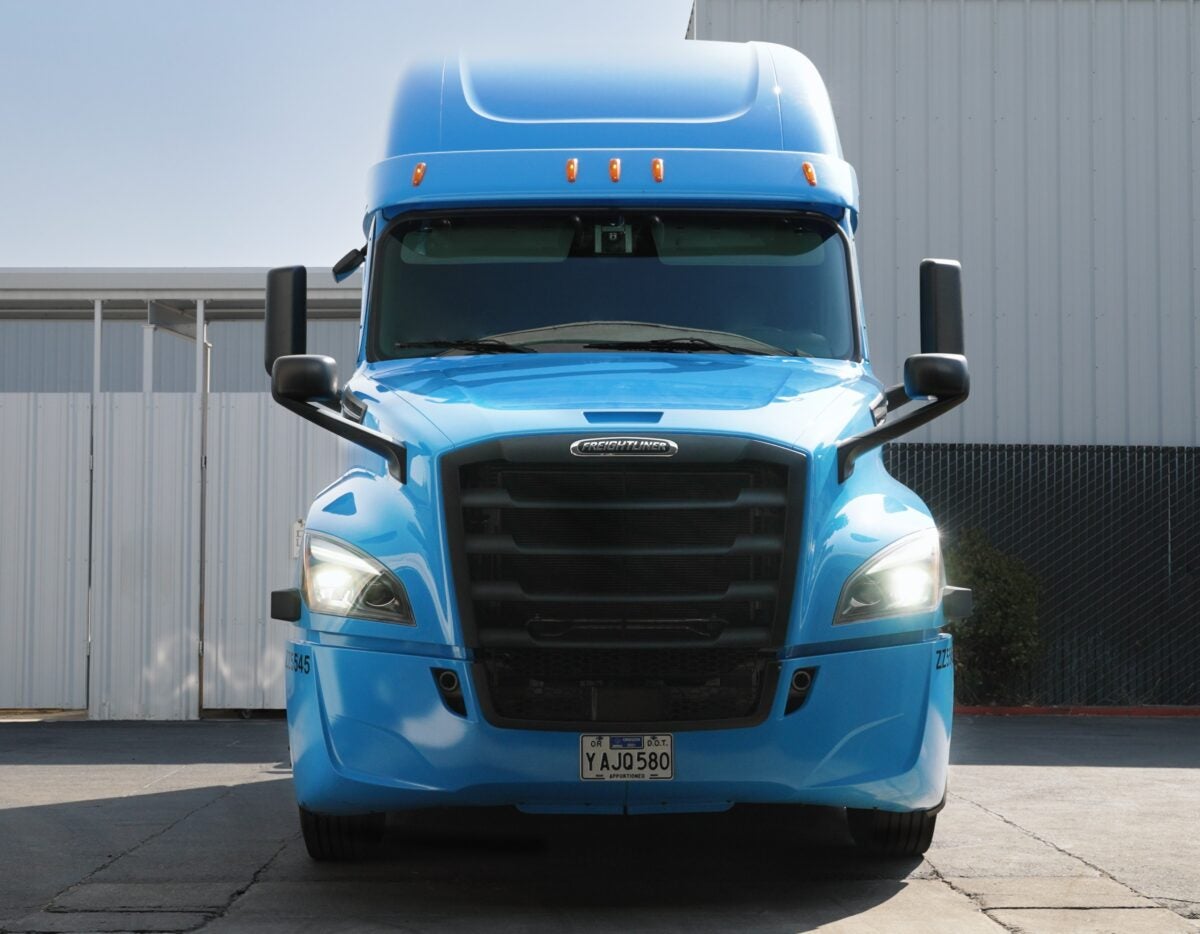More than any autonomous trucking startup, Waymo Via claims that a dozen years of self-driving car development from the original Google self-driving car program affords unparalleled lessons for creating autonomous trucks.
The case is one that only one other autonomous trucking startup can make. That is Aurora Innovation, which has melded technology from the acquisition of Uber’s ATG unit into its Aurora Driver software that Paccar and Volvo have embraced.
Waymo has more real-world miles and simulated driving than any autonomous driving software developer, the vast majority coming from the early bug-like Google cars and more recently from ride-hailing passenger vehicles in Arizona.
Complexities and advantages
“The unique aspect of Waymo is that we obviously are not singularly focused on one application, but we’re doing both,” said Boris Sofman, Waymo head of engineering for trucking. “That obviously comes with complexities, but it also comes with pretty big advantages.”
Sofman, who has been at Waymo for about 2½ years, leads the team that builds on Waymo’s technical foundations and experience in ride-hailing, leveraging those lessons for driverless trucking. He is responsible for all the software development — perception, prediction and planning — for trucking, and he oversees perception for both cars and trucks.
A fulsome fleet
The Ph.D. from Carnegie Mellon University co-founded and was CEO of Anki, where he and his team transferred technologies from robotics and AI into mass-market consumer products, shipping more than 3.5 million robots and devices globally. Sofman also worked on off-road autonomous vehicles and ways to leverage machine learning to improve real-time navigation.
Sofman spoke with FreightWaves about Waymo’s approach to autonomous trucking, the financial benefits of building on lessons learned from smaller vehicles and when Waymo Via — the trucking arm of Waymo — will hit the road with and ultimately without a safety driver.
Despite publicly naming comparatively few fleets testing its software, Waymo’s 47 trucks dedicated to autonomous development trails only TuSimple Holdings. Sofman’s responses are edited for space and clarity.
FREIGHTWAVES: You say autonomous cars and trucks are basically the same. Why?
SOFMAN: “The uniqueness on the Waymo side is 10 years of background on coming out of the development that was a mix of passenger transportation, but actually fundamentals of autonomy.
“You have mapping localization, you have infrastructure, you have a perception stack, behavior prediction stack, planning stack. You have sensors, you have hardware, you have know-how on how you validate that. You have a safety case where you’re ready to pull a safety driver out of the seat and actually go driverless.”
FREIGHTWAVES: If the two are so similar, what is the lure of working on autonomous trucks?
SOFMAN: “It felt like an entrepreneurial experience, almost like a startup within the company, but it had the tailwind from all of the historical investment that’s been happening across the board.”
FREIGHTWAVES: Where are the greatest opportunities for leverage between autonomous cars and trucks?
SOFMAN: “What I’ve been surprised by has been the degree to which there’s an overlap, not just from cars going to trucks, but also the other way around, where you think about driving on a freeway, even if it’s a truck that’s developing a lot of the core technologies, the fundamental requirements are actually quite similar.”

FREIGHTWAVES: How does sensor development change from cars to trucks?
SOFMAN: “If you were to learn to drive a truck, the fundamentals of how you drove a car actually carry over quite well. Yes, there’s new challenges and new dynamics on how you move, safety limits on what you need to do on a truck, but the fundamentals on how you see the world around you, how you think about the prediction of other characters, all of that actually stays.
“They’re more similar than you would expect. We have some unique [sensors] that we’ve developed for trucks. But fundamentally, we’re using a lot of the same underlying sensors.”
FREIGHTWAVES: How much time have you cut in development by using so much carryover?
SOFMAN: “The timeline to which we can stand up a lot of these technologies that would’ve taken years to develop is very quick because fundamentally we use them in a very similar fashion. Our first version of our latest generation truck that we drove on a freeway, with a safety driver but in autonomy mode, had zero training for trucking. We used the models carried over from our Jaguars on city streets as a starting point. They actually transition quite well.”
FREIGHTWAVES: With 47 trucks dedicated to autonomous operations, is it correct that real-world driving miles are more important than computer simulations?
SOFMAN: “We drive tens of millions of miles, and then we drive 1,000 [miles] to one in simulation. So you’re talking about tens of billions of miles in simulation already [from partnering with Google/Alphabet]. Some things you can’t fully trust simulation for. When you think about your own behavior, your actions fundamentally change the response of everybody around you.
“If you do everything in simulation, you’re making assumptions that your prediction of how others react is 100% accurate. The reality is it’s not. You have to have a larger number of operational miles to really validate that this is what happens on the road.”
FREIGHTWAVES: What about cost savings from leveraging Waymo car efforts?
SOFMAN: “We partner incredibly deeply with every other core technology team. And so a majority of our functionality is driven by fundamentally shared investments where we don’t need to reinvent the wheel. It’s still a lot of money that’s going into all the work, but it’s far, far less than what an independent company would have to invest in order to be able to do what we’re doing. Our investment is well under half of Waymo’s investment.”
FREIGHTWAVES: Waymo Via is providing an autonomous trucking platform for the Freightliner Cascadia. Daimler Trucks North America has an internal effort with Torc Robotics. Which will come first?
SOFMAN: “Given the timelines they’ve shared, our platform will be first. The integration they have is a bit different with Torc than what they’re doing for us, which is designing a unique Level 4-ready truck platform based on our requirements for integrating the Waymo Driver. The underlying algorithms on how we actually do search, and how we actually reason about the world, they’re actually identical.”

FREIGHTWAVES: When will you get to a Level 4 high-autonomy vehicle with or without a safety driver?
SOFMAN: “We haven’t gone out with the exact timeline, but we’re not behind our competitors on that front, [on either] the hardware side and the software side, We want to be out on the road within a small handful of years. Our biggest advantage is actually knowing what it takes to get to driverless. The advantages from having gone driverless on the car side I think are very difficult to underestimate given how much that influences the path.”
Related articles:
Aurora closes in on production version of self-driving truck technology
A virtual ride along in Waymo Via’s latest Class 8 autonomous truck










